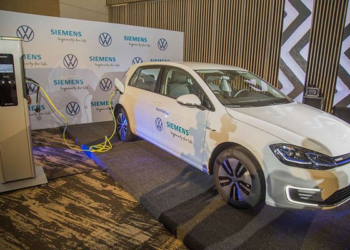In the ever-evolving landscape of automotive technology, connectivity plays a pivotal role in shaping the future of transportation. From enabling seamless communication between vehicles to facilitating interaction with infrastructure and pedestrians, automotive connectivity projects are driving innovation and transforming the way we perceive mobility. Here, we delve into the realm of automotive connectivity, exploring the latest projects and advancements in vehicle communication.
1. Vehicle-To-Everything (V2x) Technology:
At the heart of automotive connectivity projects lies Vehicle-to-Everything (V2X) technology, which encompasses various communication protocols enabling vehicles to interact with their surroundings. Through V2X technology, vehicles can communicate with other vehicles (V2V), infrastructure (V2I), pedestrians (V2P), and the cloud (V2C), facilitating real-time data exchange and enabling a multitude of smart transportation applications. From enhancing road safety to optimizing traffic flow and enabling autonomous driving, V2X technology holds immense potential to revolutionize the automotive industry.
2. Internet Of Things (Iot) Integration:
The integration of Internet of Things (IoT) principles into automotive connectivity projects unlocks new possibilities for data-driven insights and intelligent transportation solutions. By equipping vehicles with IoT sensors and connectivity modules, automakers can collect and analyze vast amounts of data pertaining to vehicle performance, driver behavior, and environmental conditions. This data-driven approach enables predictive maintenance, personalized services, and dynamic traffic management, fostering a safer, more efficient, and responsive transportation ecosystem.
3. Connected Vehicles And Intelligent Mobility:
Connected vehicles serve as the cornerstone of automotive connectivity projects, leveraging advanced communication technologies to enable seamless interaction between vehicles and their environment. Through vehicle-to-vehicle (V2V) communication, connected vehicles can exchange critical safety information, such as collision warnings and traffic alerts, in real-time, mitigating the risk of accidents and enhancing driver awareness. Furthermore, connected vehicles pave the way for intelligent mobility solutions, including predictive traffic routing, remote diagnostics, and over-the-air software updates, enhancing user experience and operational efficiency.
4. Smart Infrastructure And V2i Communication:
Smart infrastructure plays a pivotal role in enabling V2I communication, facilitating seamless interaction between vehicles and the surrounding infrastructure. Through V2I communication, vehicles can receive real-time traffic updates, traffic signal information, and road condition alerts, enabling proactive decision-making and optimizing traffic flow. Moreover, smart infrastructure enables the deployment of advanced safety systems, such as intersection collision avoidance and emergency vehicle prioritization, enhancing road safety and reducing congestion.
5. Emerging Applications And Use Cases:
Automotive connectivity projects continue to drive innovation, with emerging applications and use cases redefining the possibilities of connected mobility. From cooperative adaptive cruise control and platooning to remote vehicle monitoring and fleet management solutions, automotive connectivity projects are unlocking new opportunities for efficiency, safety, and sustainability. Furthermore, the integration of emerging technologies such as 5G connectivity, artificial intelligence, and edge computing promises to further enhance the capabilities of connected vehicles and accelerate the adoption of smart transportation solutions.
In summary, automotive connectivity projects are at the forefront of transforming the future of transportation, enabling seamless communication between vehicles, infrastructure, and the surrounding environment. Through V2X technology, IoT integration, connected vehicles, smart infrastructure, and emerging applications, stakeholders are driving innovation and shaping a more connected, intelligent, and sustainable mobility ecosystem. By embracing automotive connectivity, we pave the way for safer roads, smoother traffic flow, and enhanced user experience, heralding a new era of connected mobility and smart transportation solutions.




